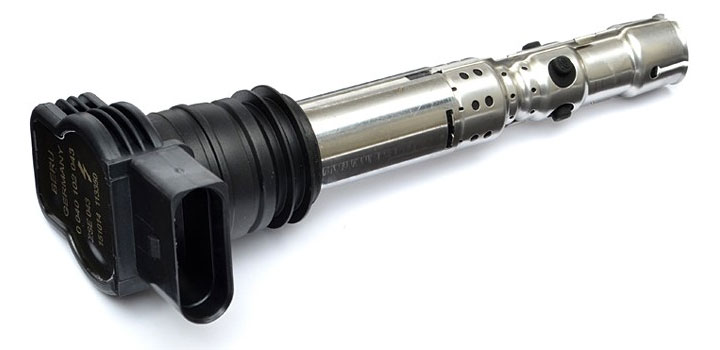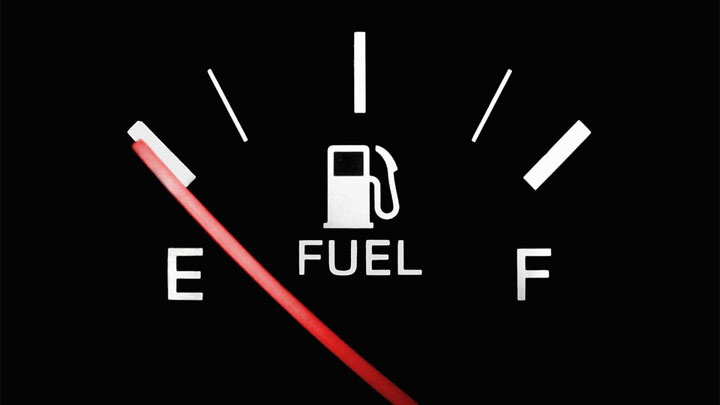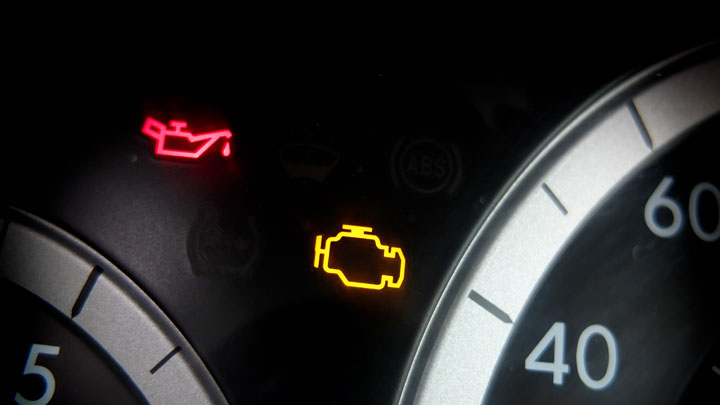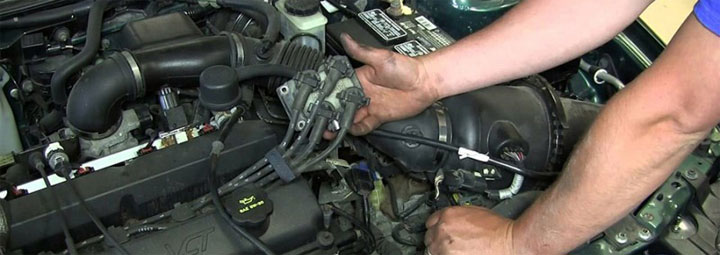7 Symptoms of a Bad Ignition Coil and Replacement Cost
Your vehicle’s ignition coils deliver electric current to the spark plugs to enable combustion. But bad coils cause misfires, poor performance, and unburned fuel. Ignoring dying ignition coils allows problems to multiply, damaging catalytic converters and causing further expenses.
Keep reading to learn the most common symptoms of a bad ignition coil as well as the average cost of replacement.

How an Ignition Coil Works
Ignition coils are known as compact electrical transformers. Their purpose is to take the low 12-volt current normally found in car batteries and convert it into a much higher voltage which is needed to ignite the fuel and start the engine.
Each spark plug in a car has its own ignition coil. The coil is either physically connected to the spark plug with wires or it sits on top of the spark plug without using wires.
The spark plug needs about 15,000 to 20,000 volts of electricity in order to form an electric spark that can ignite the fuel. If you don’t have strong ignition coils then it will result in weak fuel consumption or engine misfires.

It’s important to note that a troublesome ignition coil can also be related to a low voltage or abnormally high voltage battery. This will also cause a range of other issues with the car and upgrading it to a new battery can see many issues go away.
Many batteries found in older cars can simply breakdown with age and one sign of a bad battery is if it’s not reading at least 12.65 Volts when fully charged, you know there are issues with the battery.
Related: Ignition Coil vs Coil Pack
Symptoms of a Bad Ignition Coil
If a vehicle is behaving intermittently and is giving its driver some trouble in a smooth driving, then it could indicate that the ignition coil of that vehicle has gone bad.
The failed or weak ignition coil symptoms may vary depending on the severity of the ignition coil failure. Here are some of the most common signs of bad ignition coil.
#1 – Backfiring

Backfiring caused by your vehicle can indicate the symptoms of the ignition coil failure in its early stages. Car backfiring occurs when the unused fuel in the combustion cylinders of the engine leaves through the exhaust pipe.
If this problem is left unchecked, then it can result in costly repairs. The backfiring problem can usually be detected by the emission of a black smoke through the exhaust pipe. The smell of gasoline in that smoke may also give away the ignition coil failure.
#2 – Poor Fuel Economy

Another sign of a faulty ignition coil is poor fuel economy. If your vehicle is getting noticeably less mileage than it was before, then it could mean that an ignition coil failure has occurred.
#3 – Engine Misfiring

Engine misfiring will be seen in a vehicle whose ignition coils have failed. Trying to start the engine of such a vehicle will result in engine misfiring that sounds like a coughing, sputtering noise.
When driving at high speeds, jerking and spitting will be seen in the behavior of the vehicle. A vehicle with a failed ignition coil will also result in vibration when it is idling at a stop sign or light.
#4 – Vehicle Stalling

Ignition coil failure may also result in the stalling of the vehicle. This can occur because of the irregular sparks sent to the spark plugs by the faulty coil. Your car may shut off completely when brought to a stop leaving you with the trouble of it hopefully restarting.
#5 – Engine Jerking, Rough idling, Poor Power

Another symptom is rough idling of the engine, jerking, and hesitating while accelerating. It will feel like your vehicle is missing some power when driving.
#6 – Check Engine Light On / DTC Code

Often, the check engine light will turn on in your dash. Most commonly, engine code P0351 (Ignition Coil – Primary/Secondary Circuit Malfunction) is what shows up when scanned using a car diagnostic tool.
Scanning for the error code is probably the easiest way to troubleshoot a coil issue, so if you see that check engine light, grab your scan tool or have a repair shop confirm.
#7 – Engine Hard Starting

A hard to start engine is a symptom that will occur especially if your car uses a single coil. If the coil has a malfunction, it means the engine will be cranking without sparks inside the cylinders. At times, it may start but then die right away.
Ignition Coil Replacement Cost
Best places to order parts? See: 19 Best Online Auto Parts Stores

The cost of a new ignition coil depends on the make and model of the car. Some coils are as cheap as $75 while others cost in the $300 range. If you have the replacement professionally done then the labor costs will be between $50 and $100 per hour.
Therefore, you can expect to pay at least $150 to $200 if you were to take your car to an automotive repair shop and have them replace your ignition coil for you. If you choose to go to a dealership, expect to pay even more.
Read also: Average Fuel Filter Replacement Costs
How to Test an Ignition Coil
Here are some tips on testing an ignition coil based on whether they are a CNP (Coil-Near-Plug) or COP (Coil-On-Plug).
CNP Coil Type
- To run a test on an ignition coil, first turn off your car’s engine and open up the hood. Remove or pull the spark plug wire from it (if you car uses CNP coils). These wires typically start from the distributor cap and run to the spark plug. Use rubber gloves and insulated tools when working with these electrical components or you may get a nice jolt.
- Now attach the new spark plug to the spark plug wire (new or old spark plug to test coil sparks). Use insulated pliers to hold the spark plug onto some metal part of the engine so that the threaded portion of the spark plug is touching the metal.
- Use a fuse removal tool or needle nose pliers to remove the fuse to the fuel pump to disable it and get ready to crank the engine. You may need an extra person to turn the key in the ignition because you are holding the spark plug down with the pliers.
- Once the engine is cranked, look for blue sparks forming along the spark plug gap. If you see blue sparks then your ignition coil is working properly.
- If you don’t see the sparks or if you see orange sparks then this is a sign of the ignition coil malfunctioning.
- When you’re done with the test, disconnect the spark plug, place it back in its hole, reconnect the spark plug wires to it, and put back the fuel pump fuse.
See Also: Symptoms of a Bad Distributor
COP Coil Type
- Start the engine.
- Keeps the engine running at idle speed.
- Open the number 1 ignition coil bolt, and then pull up the coil to see how the engine runs.
If the engine’s condition changes to rough idling, that means the number 1 ignition coil is good. Then you can continue this step with the remaining coils one at a time until you find the culprit. When you pull out a faulty ignition coil, the engine condition/idle should not change.
- Replace the Engine or Replace the Car? (11 Factors to Consider) - Apr 11, 2024
- Plastic Piece Dragging Under Your Car? (What It Is and What To Do) - Mar 21, 2024
- Timing Belt vs Timing Chain (What’s the Difference?) - Feb 27, 2024
